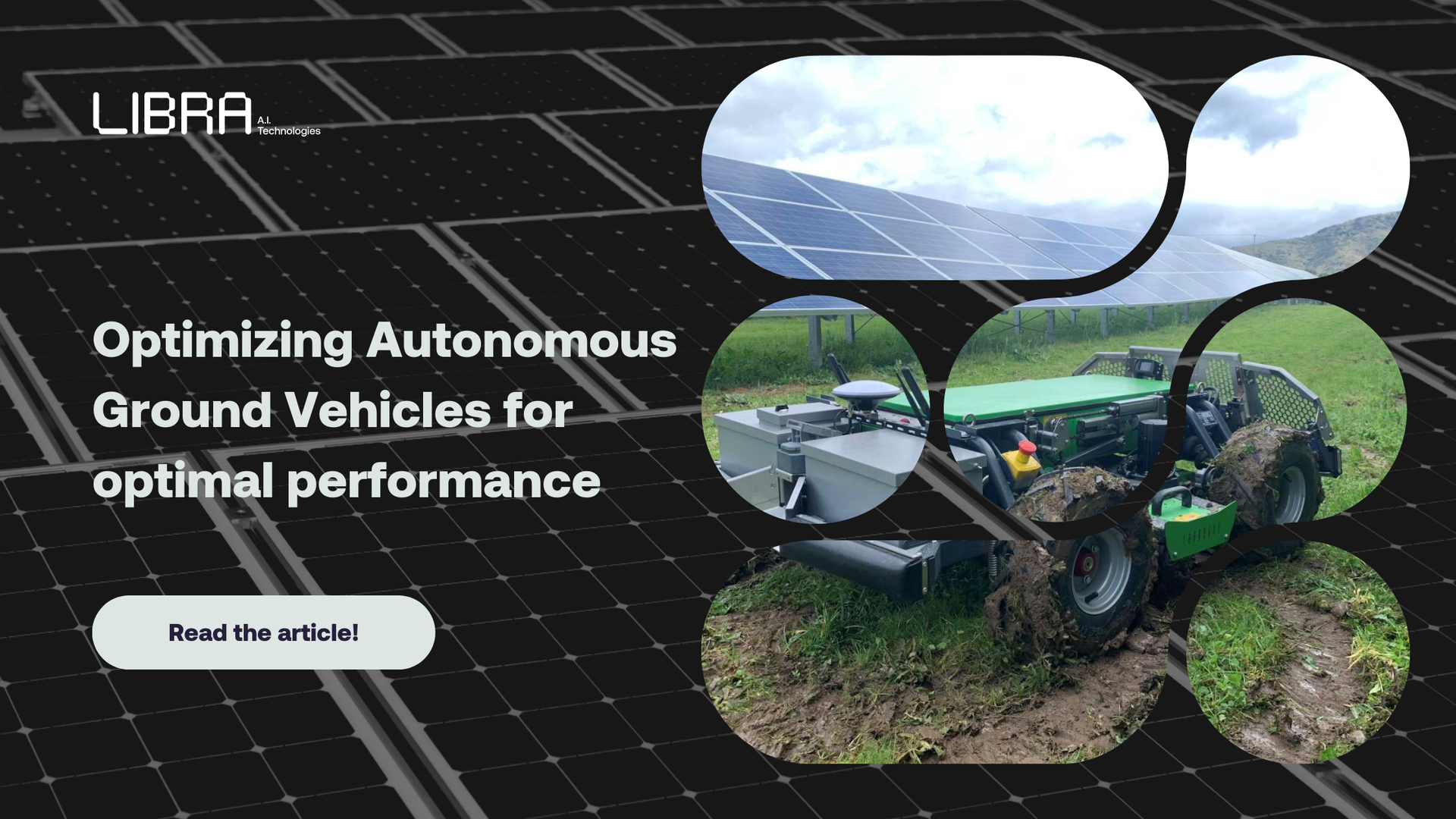Introduction
In the rapidly evolving field of robotics and automation, Autonomous Ground Vehicles (AGVs) are becoming increasingly critical for various applications, ranging from industrial automation to agricultural operations. At LIBRA AI Technologies, we are excited to introduce our latest innovation in this area: a cutting-edge solution that integrates AGVs with the Unified Planning Framework (UPF) through a Technology-Specific Bridge (TSB). This integration empowers AGVs with dynamic path planning and efficient obstacle navigation, ensuring optimal performance in complex environments.
Project Overview
This project focuses on developing a Task and Motion Planning (TAMP) system designed explicitly for AGVs. TAMP enables AGVs to operate autonomously, allowing them to navigate diverse environments, understand their surroundings through sensors, and execute tasks precisely.
The proposed technology bridges the gap between AGVs and the UPF, providing a robust framework for planning and executing tasks. By managing the communication between the AGV and the UPF, the TSB translates the AGV's state information into a format that the UPF can process. The UPF then generates a plan, which the TSB converts back into actionable instructions for the AGV, ensuring seamless execution even in dynamic environments.
Solution Details
Technology-Specific Bridge (TSB)
The TSB is a critical component of our solution, serving as the intermediary between the AGV and the UPF. It is designed to handle both static and dynamic data efficiently. Here's how it works:
-
Preloaded Data Handling: The TSB starts by loading static maps that include information on the environment's geometry, robot obstacles, optimization costs, and GNSS-RTK denied areas. This data is then processed into a generalized symbolic map, which is divided into grid cells optimized for the AGV's characteristics.
-
Dynamic Path Planning: Once the static content is initialized, the TSB allows users to input a specific area of interest represented by a 2D polygon. This area is translated into a gridded map, further partitioned for efficient path planning. The TSB then communicates with the UPF to generate paths for each partition and merges them into a comprehensive plan for the AGV.
-
Adaptive Execution: The TSB is designed to adapt to changing conditions. As the AGV navigates the environment, the TSB continuously updates the plan based on new data, ensuring that the AGV can respond effectively to obstacles and other dynamic factors.
Computed path for two selected areas within a solar park. The grid cells correspond to the AGV’s effective size, with black-shaded cells indicating restricted areas.
Implementation and Deployment
Our solution is developed as a Python library, making it highly accessible and easy to integrate into existing systems. The TSB can be installed as a Python package in any recent Linux environment, either running in the cloud or onboard the AGV, depending on the AGV's capabilities. The source code and documentation are publicly available under the Apache 2.0 license, encouraging collaboration and further development.
This project results from a successful collaboration with IKNOWHOW SA in the framework of the 2nd open call for innovators of the AIPlan4EU project, funded by the European Union’s Horizon Europe research program. Our solution was developed for enhancing "ARISTOS", a custom-designed Autonomous Ground Vehicle (AGV) operating as a robotic brush mower that can perform the task of grass cutting, surveillance and monitoring in an automated manner for preventive maintenance. The development of this technology opens new possibilities for AGVs across various industries, particularly in the energy and industrial automation sectors.
More information and access to the developed system's source code are available at the company's GitHub repository, which can be accessed at the following link: TANGO.
Impact
The implementation of the TSB has led to significant improvements in AGV performance across several key metrics:
-
Obstacle-Free Coverage: The solution achieved a 92.05% obstacle-free coverage ratio in the workspace, surpassing the initial target and demonstrating its effectiveness in complex environments.
-
Commissioning Time Reduction: The solution has reduced commissioning time by over 98%, significantly enhancing operational efficiency.
-
Operational Efficiency: Although the increase in cutting area given the battery capacity fell slightly short of the 20% target, it still achieved an 11% improvement. Additionally, grass-cutting operation time was reduced by 12%, further highlighting the system's efficiency.
These results were demonstrated in real-world conditions at the Ekta Solar Park in Thessaly, Greece. The IKnowHow's AGV "ARISTOS" successfully performed grass-cutting operations across a 256 m² area, showcasing the advantages of our TSB solution over existing manual path planning methods.
The video from the demonstrations is available below:
Conclusion
At LIBRA AI Technologies, we're excited by the potential of AI-powered solutions to transform robotics and automation. Our integration of AGVs with the Unified Planning Framework through the Technology-Specific Bridge represents a significant leap forward in autonomous ground robot technology. This innovation enhances path planning, obstacle navigation, and adaptability, setting a new benchmark for AGV performance in complex environments. The project with our trusted collaborator, IKnowHow, reflects our broader mission to create cutting-edge solutions that tackle complex challenges across various industries. With each development, we are committed to bringing advanced AI and Machine Learning into practical, real-world applications, driving progress and enabling smarter decisions across multiple sectors.

